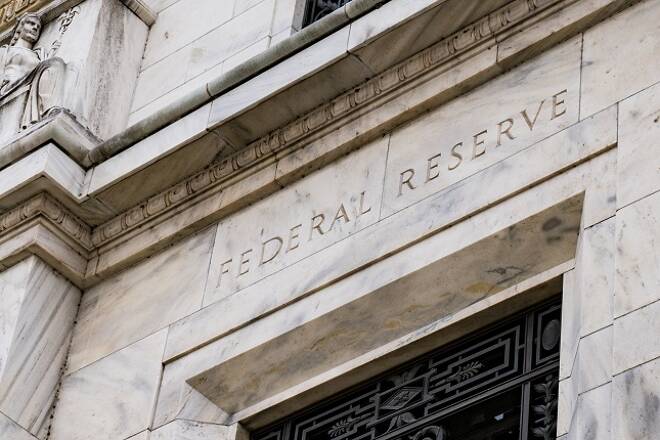Advertisement
Advertisement
Fed to Signal More Aggressive Path of Rate Hikes
By:
While today’s rate hike won’t come as a surprise to Fed-watchers and the financial markets, the future level of interest rates could. This is because there are still some who believe the central bank will maintain its less hawkish tone. However, with support from recent solid economic data I expect the Fed to announce it will reset a few of its goals today and try to nudge market rate expectations higher.
Today’s U.S. Federal Reserve interest rate decision and monetary policy decisions should not be taken likely. I think it’s safe to say that of all the Fed decisions since it started raising interest rates in December 2015 that this is perhaps the most important.
While previous Fed meetings have primarily focused on the headline number, this one will be different because the emphasis will shift to what the central bank says about the future path of interest rates. For years, we’ve watched the Fed continue its “accommodative” strategy, choosing to raise rates “gradually” as conditions warranted. We’ve also heard from a divided group of Federal Open Market Committee members, some of whom called the Fed to become more hawkish, and others expressing a more dovish tone.
However, recent comments from the dovish voices have suggested that all FOMC policymakers are now on the same page and likely to push for a steeper path of rate hikes. This notion is also being supported by nearly all measures of inflation – CPI, PCE and wage growth – which show inflation has been heating up.
As far as the markets are concerned, the announcement of a more aggressive Fed should help make U.S. government debt instruments and the U.S. Dollar more attractive investments. It will also highlight the divergence in money policy between the hawkish Federal Reserve and the other dovish major central banks, particularly in Australia and New Zealand. However, it could also have consequences for other asset classes especially U.S. equities.
At this meeting, the widely expected 25 basis point rate will be justified because the Fed has maintained its focus on domestic activities rather than worry about international issues including Brexit, sharply rising oil prices, turmoil in the emerging markets and escalating global trade disputes. Instead, the central bank has maintained its focus on its mandates which are a 2 percent inflation rate and 5 percent unemployment. As mentioned earlier, the inflation target is being supported by a number of indicators, however, the recent jump in wages probably sealed the deal for the Fed to turn more aggressive. As far as jobs are concerned, the latest Fed decision is being driven by continued strong monthly job creation and historically low weekly jobless claims data.
While today’s rate hike won’t come as a surprise to Fed-watchers and the financial markets, the future level of interest rates could. This is because there are still some who believe the central bank will maintain its less hawkish tone. However, with support from recent solid economic data I expect the Fed to announce it will reset a few of its goals today and try to nudge market rate expectations higher.
The key to doing this will be to develop a strategy that doesn’t derail U.S. economic momentum or cause a shock to the stock market. Stability in the economy and equity markets will be the Fed’s ultimate goals.
In order to achieve these new goals, the Fed will be calling on investors to buy into the process. Instead of looking at more aggressive rate hikes as a method of curtailing economic growth as President Trump seems to be doing, the Fed is going to want us to believe that more aggressive rate hikes would reflect a stronger economy.
Suggested Articles
- What to Expect From the Fed Meeting Today?
- Trump v Powell: 2 Speeches to Hit the Dollar
- Fed Facing Task of Controlling Inflation Without Fueling Stock Market Volatility
The keys to sustaining U.S. growth will be to convince the other major central banks in Europe and Japan to create more comprehensive policy measures to bolster their economic growth and to encourage the emerging economies to figure out ways to sustain growth while going through a difficult transition period.
Over the years since the global financial crisis in 2009 the Fed has provided the blueprint for how to pullout of the economic turmoil. Therefore, its strategy is being vindicated with the Fed’s ability to increase rates more aggressively. It’s now up to the rest of the world to catch up. If there is a global economic slowdown, it won’t be because the Fed raised rates too aggressively, it will be because the other major economic powers didn’t push the right buttons to sustain growth.
About the Author
James Hyerczykauthor
James is a Florida-based technical analyst, market researcher, educator and trader with 35+ years of experience. He is an expert in the area of patterns, price and time analysis as it applies to futures, Forex, and stocks.
Did you find this article useful?
Latest news and analysis
Advertisement
